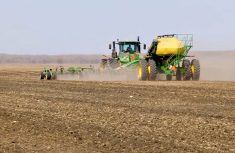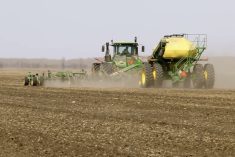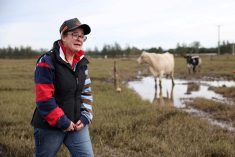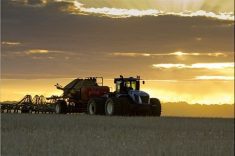Chicago | Reuters — A blanket of heavy, wet snow covering most of North Dakota, the top U.S. wheat state, threatens to delay planting of spring wheat in another blow to a U.S. farm belt already facing billions of dollars in damage from flooding.
Farmers from Missouri to South Dakota have seen their corn and soybean fields flooded by swollen rivers as winter snow melts, a sign of what may be in store for North Dakota when temperatures warm.
“How quickly the flooding and devastation came to Nebraska and Iowa was an eye-opener, especially for our producers who are close to rivers,” said Jim Peterson, marketing director for the North Dakota Wheat Commission.
Read Also

Huge crops in South America says analyst
Although there’s a debate over the size of the South American soybean crop, there’s little doubt that it will be an enormous one, said consultant Michael Cordonnier of Soybean and Corn Advisor in Hinsdale, Ill.
Farmers in the world’s No. 2 wheat exporter planted the fewest acres to winter wheat in 110 years, hampered by rainy conditions. Now heavy snows are threatening the seeding of spring wheat, which represents up to a third of total U.S. wheat production each year.
Planting of spring wheat, a high-protein class of wheat that is often blended with lesser grades of grain to improve milling quality for breads and pizza dough, typically begins in April in North Dakota, the largest producer.
But soils still frozen in some areas to a depth of five feet, and deep snows that threaten to melt and flood the Red River Valley, in eastern North Dakota, are likely to delay seeding. The National Oceanic and Atmospheric Administration this week named the Red River basin among the U.S. areas at greatest risk of major flooding this spring.
“I am looking out my window, and … there’s two to three feet of snow,” said Joel Ransom, an agronomist with North Dakota State University in Fargo, the state’s largest city. Forecasts called for flood risks in Fargo to peak in mid-April, an indication that snow melt will have reached the Red River by then, Ransom said.
“That gives me a gut feeling that nobody is going to be able to get to field until some time after the middle of April.”
Spring wheat can still yield well if planted late, but farmers prefer to seed it early, ahead of corn and soybeans, to cut the risk of stress from summertime heat.
Spring wheat was North Dakota’s mainstay crop for generations, but soybean acreage has roughly doubled over the last decade, edging out spring wheat plantings in recent years due to rising profitability.
The U.S.-China trade war, however, has hurt soybean growers in North Dakota, where most of the crop is shipped to the Pacific Northwest for export to Asia. Some farmers see spring wheat as a safer bet, but the snow and recent wheat prices have them concerned.
“The marketing (and) trade issues… have caused some fear,” said Philip Volk, who farms near York, N.D., about 100 km south of Killarney, Man.
— Julie Ingwersen is a Reuters commodities correspondent in Chicago.















